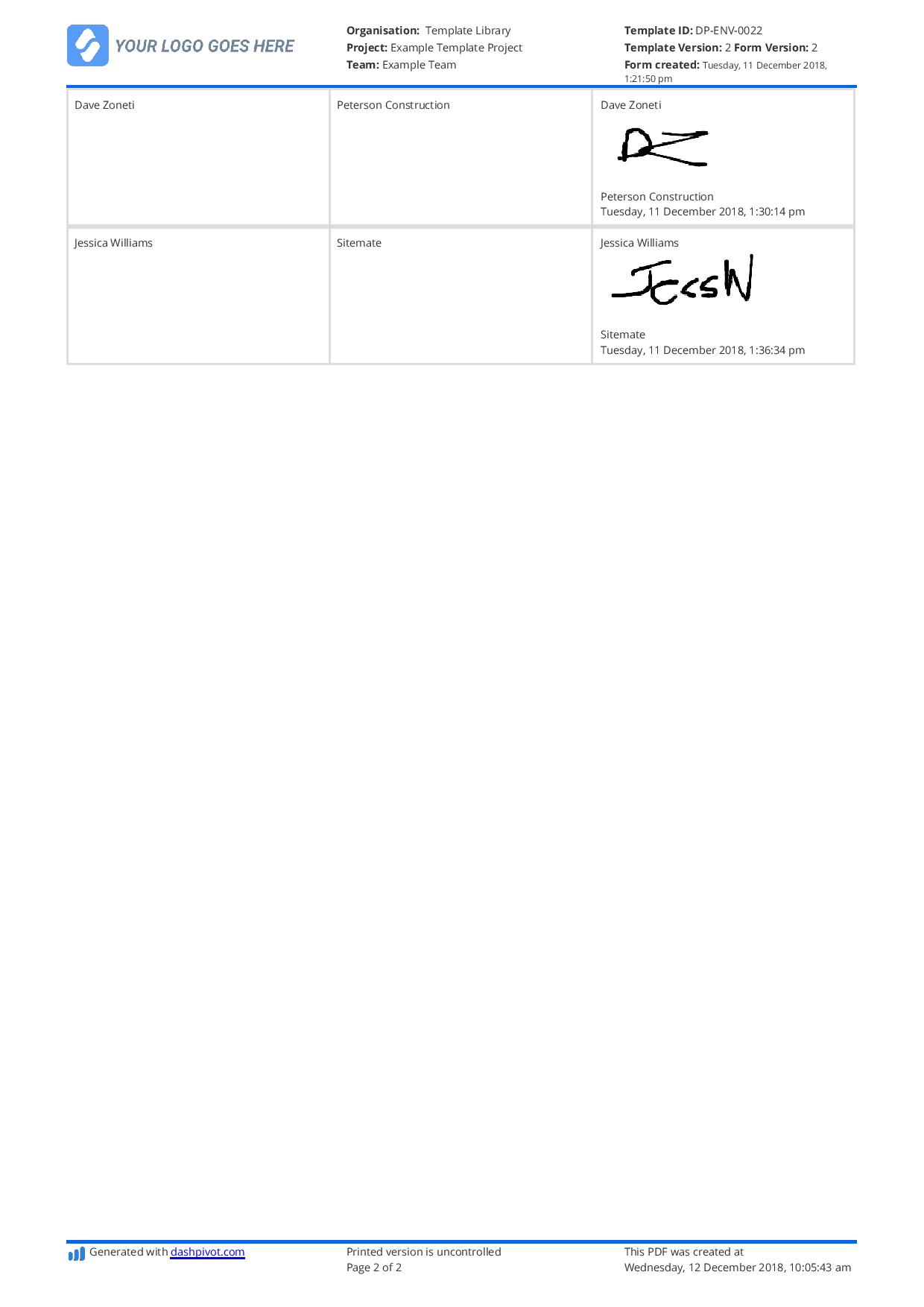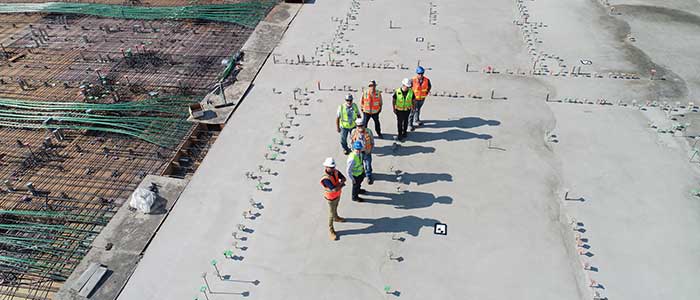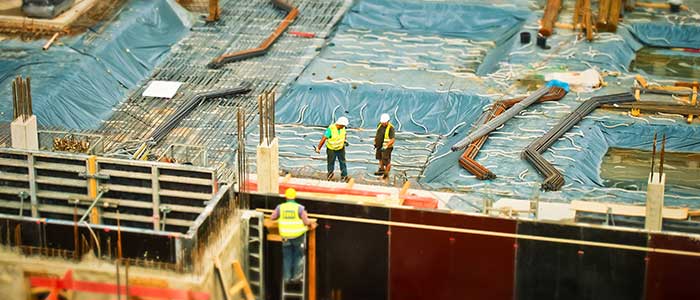Safety – Construction toolbox talk
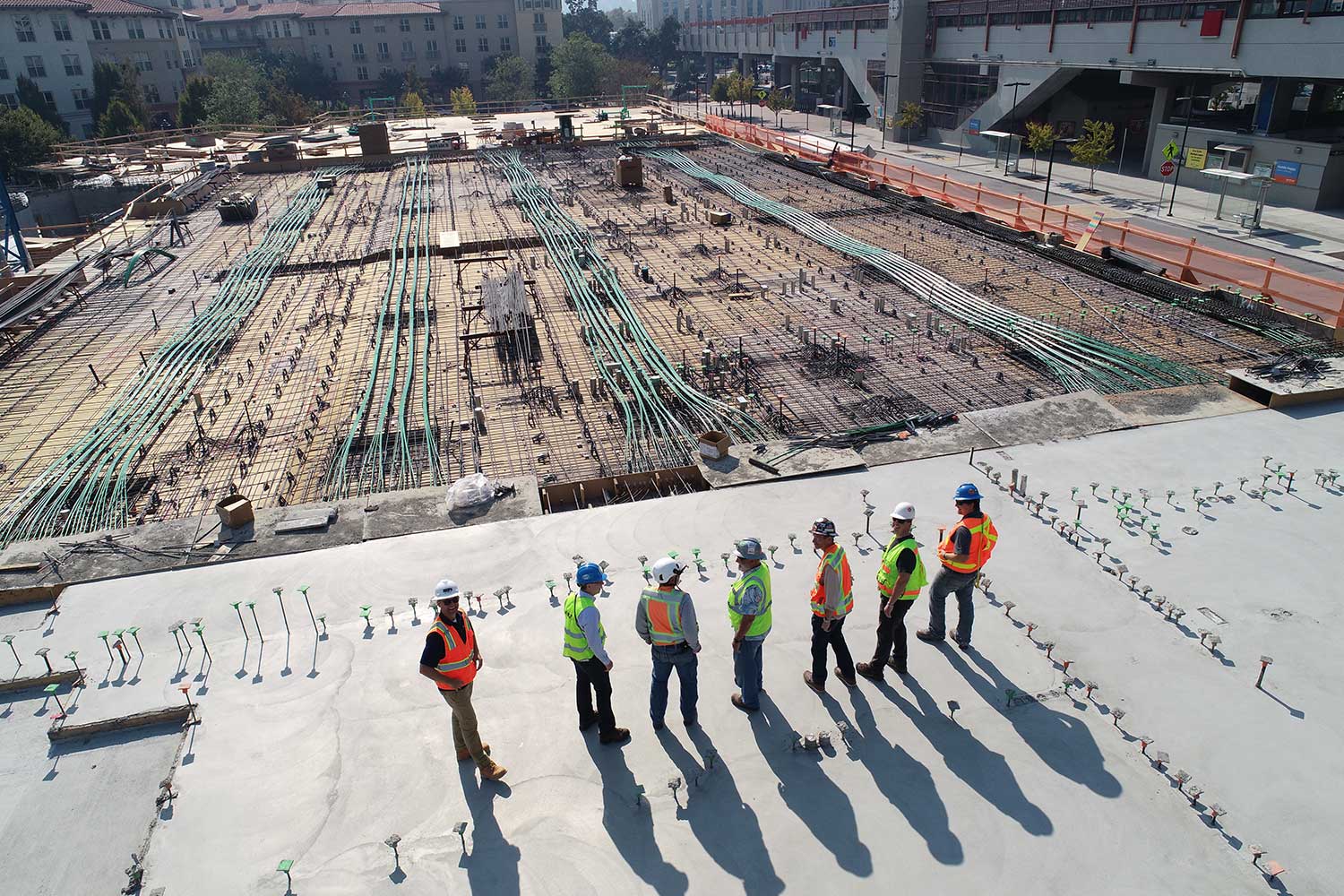
The construction toolbox talk: Everything you should know about toolbox talks
What is a toolbox talk?
A construction toolbox talk is a short (usually 5-10 minutes) discussion which takes place directly on site or 'next to the toolbox' and surfaces a specific issue which is relevant to the site and relevant to workers.
Most commonly, construction toolbox talks are safety related - where a particular safety topic is addressed - but construction toolbox talks can also centre around environmental talks and quality issues as well.
The toolbox talk has been a staple on construction sites for many years as it is often the best and easies way to keep safety and other site specific issues top of mind for workers.
Lengthy safety meetings and site courses serve a purpose for construction workers, but they are too infrequent and often out of context for construction workers.
When a toolbox talk presenter or safety or environmental training officer addresses a very relevant site related topic just before the day commences, it's easier for people to relate and create a fruitful discussion which directly impacts and improves the way they go about their day.
Why are toolbox talks important on construction sites?
Toolbox talks are a powerful medium for facilitating positive conversations on construction sites - and it's important that your company engages in toolbox talks properly.
The major benefit of a toolbox talk and why they are so important for construction sites is that they create a positive culture where people are encouraged to surface issues and address potential problems on site which could if not addressed - result in hazards, incidents and impact project progress.
The power of these discussions can not be overstated. It's so easy for construction workers to skip over site issues or ignore them completely in favour of 'just getting on with it'. In fact, this type of 'get it done' (which has resulted in some positive outcomes for construction companies and projects) can actually be quite toxic and up resulting in major issues down the line.
Toolbox talks solve this in two ways:
- They solve this issue by giving people a safe forum for discussing these types of issues on a regular basis
- They create a positive culture of discussion where people feel like they can take the time out of their day to bring attention to a hazard or issue which they feel is worth talking about. These issues have often been encountered multiple times and often people have thought the same thing, but people tend to 'group think' and ignore issues they see because no one else has brought it up or mentioned it before.
The other major benefit of toolbox talks is that they get everyone involved in discussing safety. Safety rules and regulations can focus too deeply on certain elements of work and skip over others. Bringing teams together to have these conversations gets input from a number of different jobs and levels of work - which creates a more holistic approach. It also enables people to learn about things which they don't necessarily face in their day-to-day. Maybe a machine operator doesn't know a tonne about electrical safety and vice versa. This is a great opportunity to upskill people in key areas and make them better and safer overall players.
Construction sites are a complicated cacophony of many moving pieces and opinions. A construction site toolbox talk is a forum for bringing these moving pieces and opinions together and discussing where things can be improved and what people should be thinking about. These types of discussion can connect teams to common goals and issues which have a big impact on safety and other functions of the business as you move forward.
What does a toolbox talk entail and look like?
The main component of any toolbox talk is the discussion - but construction companies and sights can also pull a lot of great information and insight from these talks if they are documented and organised properly.
When documenting toolbox talks properly, there's the obvious benefit of being able to see what topics you have covered and making sure to keep things fresh and interesting. But there's also other serious positive externalities which can come from these 5-10 minute informal chats.
- Companies, management and safety teams can uncover areas of site or issues which they might not have been aware of
- Teams can better prioritise safety or environmental issues and topics based on the collective opinion of everyone on site and prioritise the 'lowest hanging fruit' i.e areas of the business where there is a lot of room for improvement
- Frequent and incremental changes result in big impacts over time. Rather than trying to address safety or environmental management with one big swish of a wand, you can tackle it piece-by-piece
The best way to manage the toolbox talk documentation process is via a standardised construction toolbox talk template.
This template will be accessible and available to every presenter or training officer, who will capture:
- The toolbox topic
- The personnel in attendance
- The date and duration of the talk
- A topic summary with discussion points or topics, actions to be taken and the person responsible for these actions
As you can see from the above bullet points, documenting toolbox talks in this way creates formality and accountability around a practice which is otherwise informal. This way, you can combine the benefits of frequent and informal discussions with the power of creating formalised and actionable outcomes from these get togethers.
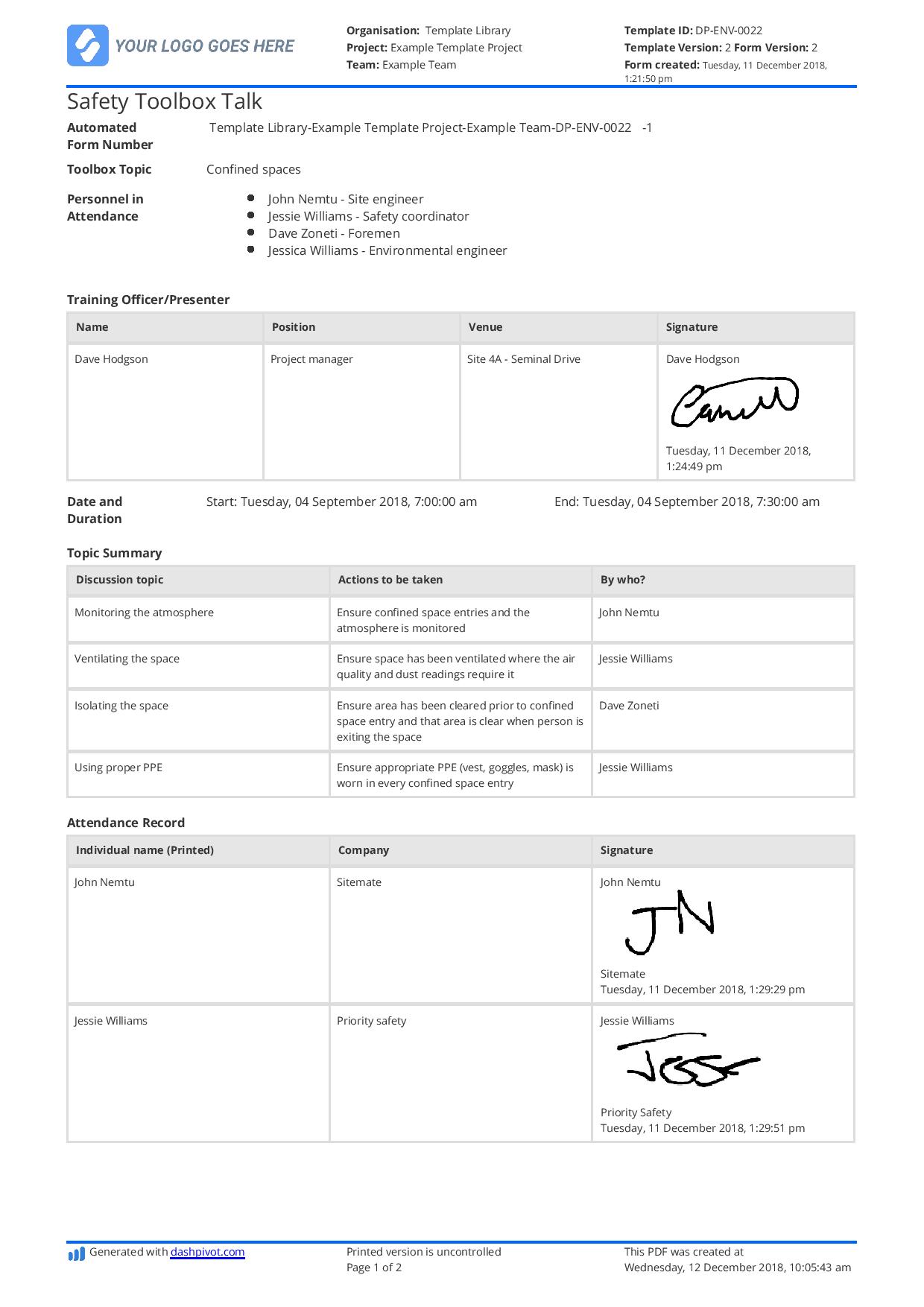
Use and edit this construction toolbox talk form for free.
What construction issues should you talk about in your toolbox talk?
The topics of your toolbox talks should be based on what is most applicable and relevant to your company, construction site and teams.
There are hundreds (literally) of construction toolbox talk topics which you can copy, adjust and brainstorm for your own toolbox talks - but the most important thing is that people and teams get something out of these talks.
Focusing on the topic of working at heights when no one is working at heights might not be as good of a use of time as focusing on excavation safety if you are currently excavating.
You want to align you current work and jobs of your people with the toolbox talk as closely as possible. This results in more relevance, and also improves engagement amongst the people in attendance. No one (or not many people) want to talk about things which they have no impact on or influence over.
You also want to keep things as fresh and novel as possible. If everyone on the team has an acute understanding of PPE safety (personal protective equipment), it might be better to focus on something else.
The counter to this argument (and a strong counter at that) is that people need to focus on the things they think they know because they are complacent about those things and that's where issues and mistakes occur. I agree with this, so there's a need to balance these discussions to the best of your ability and keep them fresh while ensuring that people understand that there are some core safety, environmental, quality issues which need to be regularly talked about and frequently acknowledged.
Over the course of a project, you will have plenty of time to touch on a number of important and influential toolbox talk topics which are absolutely relevant to the nature of the construction project.
How to better document, organise and analyse toolbox talks
There's a lot of forms and documentation on construction sites and the last thing that most companies and workers want or need is more forms to create, fill in and organise. This is why it pays to create an efficient toolbox talk process which also factors in how these forms will be managed and actioned over time.
Some companies still use paper-based documents, word docs and PDFs to manage this process, but there are plenty of downsides to approaching it this way, some of which I am sure you have experienced while using other forms and documents:
- Toolbox talks get filled out manually which takes time
- Toolbox talk forms need to actually be taken to site in the first place
- Sometimes the forms are illegible and the data is often half-baked or impossible to interpret
- You have toolbox talks floating around which are never seen or heard of ever again
- The data which is collected must be reconciled and aggregated into another document like a spreadsheet which takes time
The better way to manage this process is to incorporate your toolbox talk process into project delivery software or project management software.
This way you can:
- Standardise your toolbox talk form into a digital format which toolbox talk presenters can access and complete via a mobile or tablet directly on site
- Keep all of the data being collected via the form standardised and organised so that you can see what people have been talking about and make smart decisions based on accurate data
- Eliminate the downloading, uploading and emailing of documents back and forth which takes engineering and admin time away from other more important tasks
If you have digitised some of your other forms with a flexible solution like Dashpivot, adding your construction toolbox talk into this smart IMS is a no-brainer.
If you are still managing toolbox talks manually, then try our digital toolbox talk form below for free. It will give you a good idea of how you can streamline and simplify toolbox talks as well as other forms and functions of your business so that you can improve how work is done every day.
People in 80+ countries use this safety management system to improve their safety processes and outcomes.

